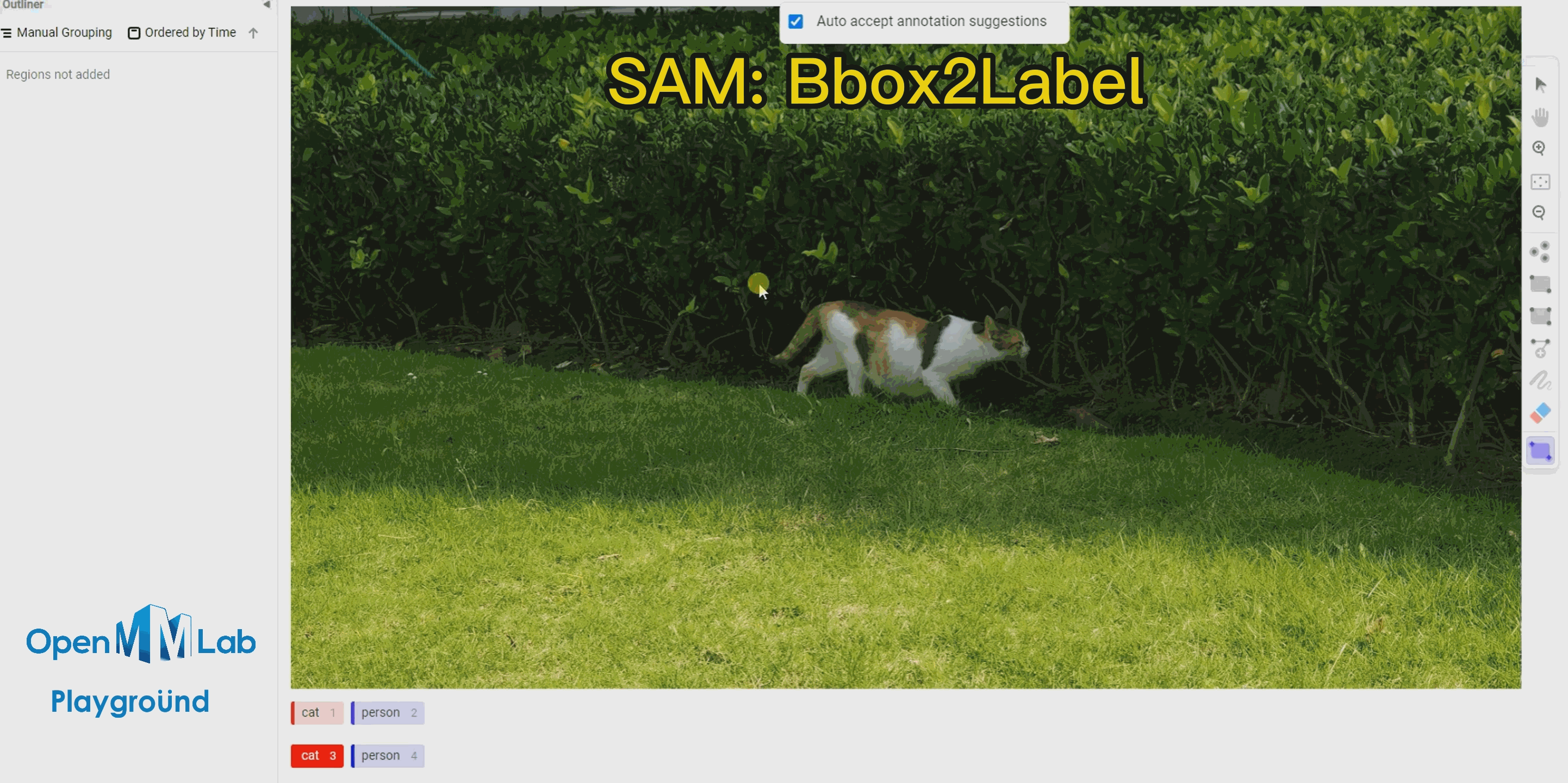Fix RAM issue
- The original version will not release RAM and keep load SAM model to new instance for every image
- The backend will be OOM after a few image and killed Faster labeling
- Due to the RAM issue, the labeling process take way too long
- Improve the load time on image load to < 1s
- Improve SAM labeling result draw to < 1s
conda create -n sam_labeling python=3.9 -y
conda activate sam_labeling
# ROCM 5.2 (Linux only)
pip install torch==1.13.0+rocm5.2 torchvision==0.14.0+rocm5.2 torchaudio==0.13.0 --extra-index-url https://download.pytorch.org/whl/rocm5.2
# CUDA 11.6
pip install torch==1.13.0+cu116 torchvision==0.14.0+cu116 torchaudio==0.13.0 --extra-index-url https://download.pytorch.org/whl/cu116
# CUDA 11.7
pip install torch==1.13.0+cu117 torchvision==0.14.0+cu117 torchaudio==0.13.0 --extra-index-url https://download.pytorch.org/whl/cu117
# CPU only
pip install torch==1.13.0+cpu torchvision==0.14.0+cpu torchaudio==0.13.0 --extra-index-url https://download.pytorch.org/whl/cpu
pip install opencv-python pycocotools matplotlib onnxruntime onnx
pip install git+https://github.com/facebookresearch/segment-anything.git
# download SAM h model (better result)
wget https://dl.fbaipublicfiles.com/segment_anything/sam_vit_h_4b8939.pth
# sudo apt install libpq-dev python3-dev # Note: If using Label Studio 1.7.2 version, you need to install libpq-dev and python3-dev dependencies.
# Installing label-studio may take some time. If you cannot find the version, please use the official source.
pip install label-studio==1.7.3
pip install label-studio-ml==1.0.9
# Need 2 seperate terminal
# Start label studio web on terminal 1
start-label.sh
# Start label studio ml backend on terminal 2
# set out_mask=False out_poly=True to get polygons results
# set out_mask=True out_poly=False to get masks results
start-ml.sh
Label name need to be the same for every label type SAM use keypoints and rectangle labels as input, PolygonLabels and BrushLabels to draw results
<View>
<Image name="image" value="$image" zoom="true"/>
<KeyPointLabels name="KeyPointLabels" toName="image">
</KeyPointLabels>
<RectangleLabels name="RectangleLabels" toName="image">
<Label value="label 1" background="#8BACAA"/>
</RectangleLabels>
<PolygonLabels name="PolygonLabels" toName="image" opacity="0.9">
<Label value="label 1" background="#8BACAA"/> </PolygonLabels>
<BrushLabels name="BrushLabels" toName="image">
<Label value="label 1" background="#8BACAA"/>
</BrushLabels>
</View>
In the above XML, we have configured the annotations, where KeyPointLabels are for keypoint annotations, BrushLabels are for Mask annotations, PolygonLabels are for bounding polygon annotations, and RectangleLabels are for rectangle annotations.
This example uses two categories, cat and person. If community users want to add more categories, they need to add the corresponding categories in KeyPointLabels, BrushLabels, PolygonLabels, and RectangleLabels respectively.
Next, copy and add the above XML to Label-Studio, and then click Save.
After that, go to Settings and click Add Model to add the OpenMMLabPlayGround backend inference service. Set the URL http://localhost:8003 for the SAM backend inference service, enable Use for interactive preannotations, and click Validate and Save.
⚠If you are unable to execute successfully at this step, probably due to the long model loading time, which causes the connection to the backend to time out, please re-execute export ML_TIMEOUT_SETUP=40 (linux) or set ML_TIMEOUT_SETUP=40 (windows) and restart the label-studio start SAM backend reasoning service.
If you see "Connected" as shown below, it means that the backend inference service has been successfully added.
Click on Label to start annotating.
To use this feature, enable the Auto-Annotation toggle and it is recommended to check the Auto accept annotation suggestions option. Then click the Smart tool on the right side, switch to Point mode, and select the object label you want to annotate from the options below, in this case, choose "cat." If using Bbox2Label, please switch the Smart tool to Rectangle mode instead.
Point2Label: As can be seen from the following gif animation, by simply clicking a point on the object, the SAM algorithm is able to segment and detect the entire object.
Bbox2Label: As can be seen from the following gif animation, by simply annotating a bounding box, the SAM algorithm is able to segment and detect the entire object.






